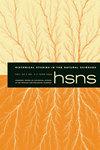Fighting the Cold War and the “Market War” through Critical Technologies, 1979–1992
IF 0.3
3区 哲学
Q2 HISTORY & PHILOSOPHY OF SCIENCE
引用次数: 0
Abstract
The critical technologies movement was an effort among Democrats and Republicans to enact policies to fund scientific research in twenty-three areas of technological growth crucial to economic competitiveness and military security. These areas included micro- and nanofabrication, ceramics, and software, among others. Unlike during the early Cold War when policymakers were unwilling to admit openly whether research and development spending constituted government intervention in the free market, with critical technologies, policymakers actively and publicly collaborated with business interests to selectively target technologies they believed were likely to proffer returns on government investment. This article traces the rise and fall of a political consensus: it discusses how and why these technologies were selected, the policies passed in this area, and ultimately, why this bipartisan convergence around critical technologies fell apart. More broadly, the critical technologies movement provides a fulcrum for understanding two key political shifts: how President Bill Clinton and his fellow Democrats captured Silicon Valley and major business interests to their ascendant political coalition, and why the Republican Party compromised its free-market principles to support critical technologies in the leadup to the 1992 election.通过关键技术打冷战和“市场战争”,1979-1992
关键技术运动是民主党和共和党之间的一项努力,旨在制定政策,资助对经济竞争力和军事安全至关重要的23个技术增长领域的科学研究。这些领域包括微纳米制造、陶瓷和软件等。与冷战初期决策者不愿公开承认研发支出是否构成政府对关键技术自由市场的干预不同,政策制定者积极和公开地与商业利益合作,选择性地瞄准他们认为可能为政府投资提供回报的技术。本文追溯了政治共识的起起落落:它讨论了这些技术是如何以及为什么被选择的,在这一领域通过的政策,以及最终,为什么围绕关键技术的两党融合会破裂。更广泛地说,关键技术运动为理解两个关键的政治转变提供了一个支点:比尔·克林顿(Bill Clinton)总统和他的民主党同僚如何将硅谷和主要商业利益吸引到他们日益壮大的政治联盟中,以及为什么共和党在1992年大选前牺牲了其自由市场原则来支持关键技术。
本文章由计算机程序翻译,如有差异,请以英文原文为准。
求助全文
约1分钟内获得全文
求助全文
来源期刊

Historical Studies in the Natural Sciences
社会科学-科学史与科学哲学
CiteScore
1.00
自引率
0.00%
发文量
24
审稿时长
>12 weeks
期刊介绍:
Explore the fascinating world of Historical Studies in the Natural Sciences, a journal that reveals the history of science as it has developed since the 18th century. HSNS offers in-depth articles on a wide range of scientific fields, their social and cultural histories and supporting institutions, including astronomy, geology, physics, genetics, natural history, chemistry, meteorology, and molecular biology. Widely regarded as a leading journal in the historiography of science and technology, HSNS increased its publication to five times per year in 2012 to expand its roster of pioneering articles and notable reviews by the most influential writers in the field.
 求助内容:
求助内容: 应助结果提醒方式:
应助结果提醒方式:


